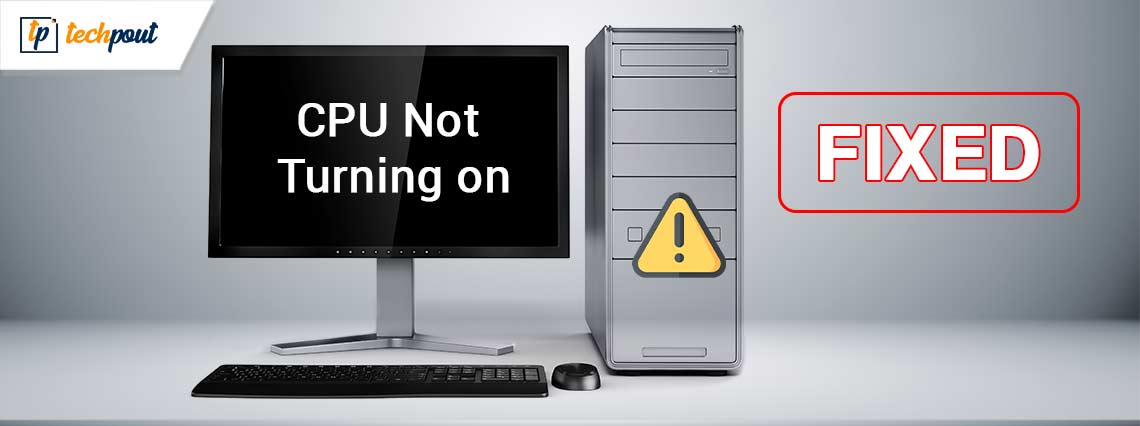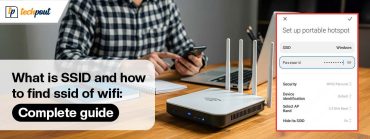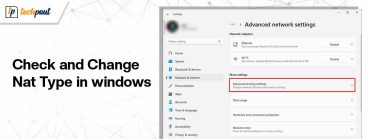Easy Fixes for CPU Not Turning on for Windows PC

Here is an effective guide on how to fix the issues quickly and easily if your CPU does not turn on.
It can be frustrating to find the CPU is not turning on despite many attempts to power on the computer. However, it is not something that cannot be fixed. You can fix this issue effortlessly if you know the right way to do it.
Hence, this article acquaints you with the best possible solutions to the problem you are struggling with. However, it is always recommended to know what may have triggered the issue before trying to fix it to troubleshoot it better. Hence, let us first look at why you are experiencing a dead PC or an issue where your computer fan is running but is not turning on.
Why Is Your CPU Not Turning On
Below are the possible reasons your CPU does not power on.
- Power issues, such as faulty internal power supply or your computer not getting enough power
- Monitor problems, such as the monitor not turning on or connecting to the PC
- Your system is overheating
- Problematic BIOS settings
- Faulty or damaged internal PC components
Above, we looked at various factors that may be responsible for the issue you are experiencing. Now, let us look at the most suitable ways to fix it.
How to Fix CPU Is Not Turning On Problem (Quick and Easy)
You can apply the following solutions to solve the problems if your computer’s CPU is not switching on.
Fix 1: Try another power source
A failed internal power supply or no electricity entering the computer can be a reason your CPU does not turn on. In this situation, you can take the following steps to change your computer’s power source to solve the problem.
- To begin with, unplug your PC from all the power sources.
- Secondly, plug your computer straight into the wall outlet, without using the UPS, power strip, or surge suppressor.
Also Read: How to Fix BIOS Not Detecting SSD in Computer PC
Fix 2: Check the power cable
A loose or disconnected power cable can be another reason your CPU is not switching on. Hence, you should check the power cable for damages and replace it if necessary. Also, you can change the power cord to ensure it functions properly.
Fix 3: Pay attention to motherboard beep sounds
A series of beep sounds may come from your motherboard when you try to power on the PC. You can identify these sounds to diagnose and solve the problem. A single beep sound means everything is working perfectly. Whereas, long and continuous beeps indicate a critical fault with the power supply.
Moreover, your computer can indicate error codes through a series of beeps, sounding like Morse code. You can go through your PC’s manual to understand the meaning of these beeps and how to fix the problem.
If you do not have the PC’s manual, you can find the necessary information to troubleshoot the issue on the computer manufacturer’s website.
Fix 4: Check your motherboard for error codes
Modern motherboards come with digital displays, showing error codes depicting what process went wrong. You can note the code and search the web to learn how to fix it.
Fix 5: Ensure there is no problem with the power button
A damaged or problematic power button can be the reason your computer fan is running but the device is not turning on. Hence, you can try turning on the onboard button of the motherboard. Since all motherboards are different, you may need to go through your motherboard’s manual to locate the power button.
Also Read: Best Overclocking Software For Windows
Fix 6: Check the display
If you cannot see anything on the computer screen despite the device seeming to be running, there can be a problem with the monitor. Hence, make sure that the monitor is switched on and connected to the PC.
Moreover, ensure the monitor brightness is not accidentally turned down to zero. If possible, you can plug the PC into another display to check if it fixes the CPU not turning on issue.
Fix 7: Let your computer cool down
If you perform a lot of gaming or other resource-intensive tasks, overheating is among the top reasons your CPU is not powering on. Hence, you can wait for the device to cool down before starting it again. Moreover, you can use the best CPU temperature monitor tools to prevent overheating in the future.
Fix 8: Unplug the unnecessary USB devices
USB devices and ports can conflict with the computer, resulting in problems like the CPU not turning on. Hence, you can disconnect all the USB devices and ensure ports are empty when you boot the PC.
Fix 9: Check the BIOS settings
Basic Input/Output System or the BIOS is a low-level program that controls your computer’s hardware. Any issue with the BIOS settings can be a reason the CPU does not power on. Hence, you can follow the below directions to check and correct the BIOS settings.
- To begin with, press your computer’s power button while holding down the F2/F11/F8/Del key.
- Secondly, wait until your PC enters BIOS.
- Now, navigate to the boot menu.
- Confirm and set your OS drive as your boot drive.
Note: Windows 11 users need to enable secure boot mode and UEFI. You can follow the path Boot tab> Configure (if you have UEFI as the boot mode). If your boot mode is not UEFI, change the mode to UEFI and save the new settings.
Now, you can enable the Secure Boot mode by navigating to the Security tab and switching the mode from Disabled to Enabled. Lastly, save the changed settings and reboot the computer.
Fix 10: Try reinstalling the CMOS battery
You can try to remove and reinstall the CMOS battery to solve your problem. However, ensure you know the battery’s direction (generally, the engraved side has the face-up orientation) before following the below directions to get it reinstalled.
- To begin with, ensure your computer is off.
- Secondly, remove all the cords and disconnect all the power sources.
- Now, open your computer’s cover to view the hardware present inside.
- Locate and remove the CMOS battery.
- Lastly, replace the battery in the same position in which you found it and start your computer.
Also Read: Best USB Bootable Software for Windows
CPU Not Turning On Fixed
You no longer have to panic if your CPU is not turning on after a power outage or otherwise. This article guided you through how to fix the issue effortlessly. You can follow the above fixes sequentially until the problem is fixed. Please let us know if you were able to successfully solve the problem with the help of our guide. Also, you can leave a comment if you have any questions or confusion about this write-up. We will be pleased to address all your concerns.


